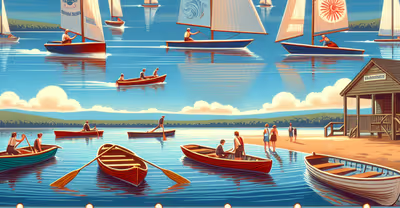
Key Takeaways
- Seasonal changes significantly influence lake boating experiences.
- Anticipation and adaptation are part of the boating adventure.
- Lakes are dynamic, offering unique experiences each season.
Ever wondered what secrets lakes hold beneath their calm surfaces?
Boating on lakes can reveal many surprises, especially as seasons change.
Boating enthusiasts are familiar with the thrill that comes with seasonal changes.
The anticipation of witnessing lakes transform and adapting boating habits makes each season unique and enticing.
You're not just a spectator but a participant in the unfolding story of nature.
As temperatures fluctuate, so does lake life.
You're in for a treat because lakes are not static backdrops; they dance to the rhythms of the seasons, altering their dynamics with changing temperatures and precipitations.
It’s not just about being on the water, it’s about experiencing the water itself change.
Lake Turnover

Ever been by a lake in the spring or fall and noticed the water looks a bit different?
That's the lake turnover at work!
Lake turnover is a twice-a-year event that ensures the lake’s health and can make your boating experience quite unique.
So, what's happening beneath the surface?
During spring and fall, as you swap your wardrobe to suit the changing weather, lakes go through their own transition.
Spring Turnover
When the ice melts, as the sun gets cozier with us in spring, the warming water decreases in density and stirs things up.
Here’s what happens, step by step:
- Ice melts and warmer top water mixes with cooler bottom water.
- This mixing balances the lake's temperature throughout.
- It also spreads out nutrients, affecting fish and plant life—and your fishing trips!
Fall Turnover
When the chill returns, warmer water cools and sinks, stirring the lake once again.
This time:
- Cooler water from the top sinks.
- It pushes nutrients up from the bottom.
- Your favorite lake gets another full mix before winter sets in.
This turnover isn't just a lake stretching its limbs; it's vital!
It affects water clarity and temperature which, in turn, alters fish behavior.
Remember, the water might be cooler and cloudier during turnover times, so prep for your boating trips accordingly.
Curious about how deep the lake should be for turnover to occur?
Typically, more than 20 feet deep.
Check with your local lake authority if you're wondering about your neck of the woods.
Keep these facts in mind next time you're out on the water during these seasons, and you'll understand the aquatic dance happening below.
Happy boating, and don't forget to share this water-cooler—or should I say water-lake?—fact with fellow boaters!
Winter Boating
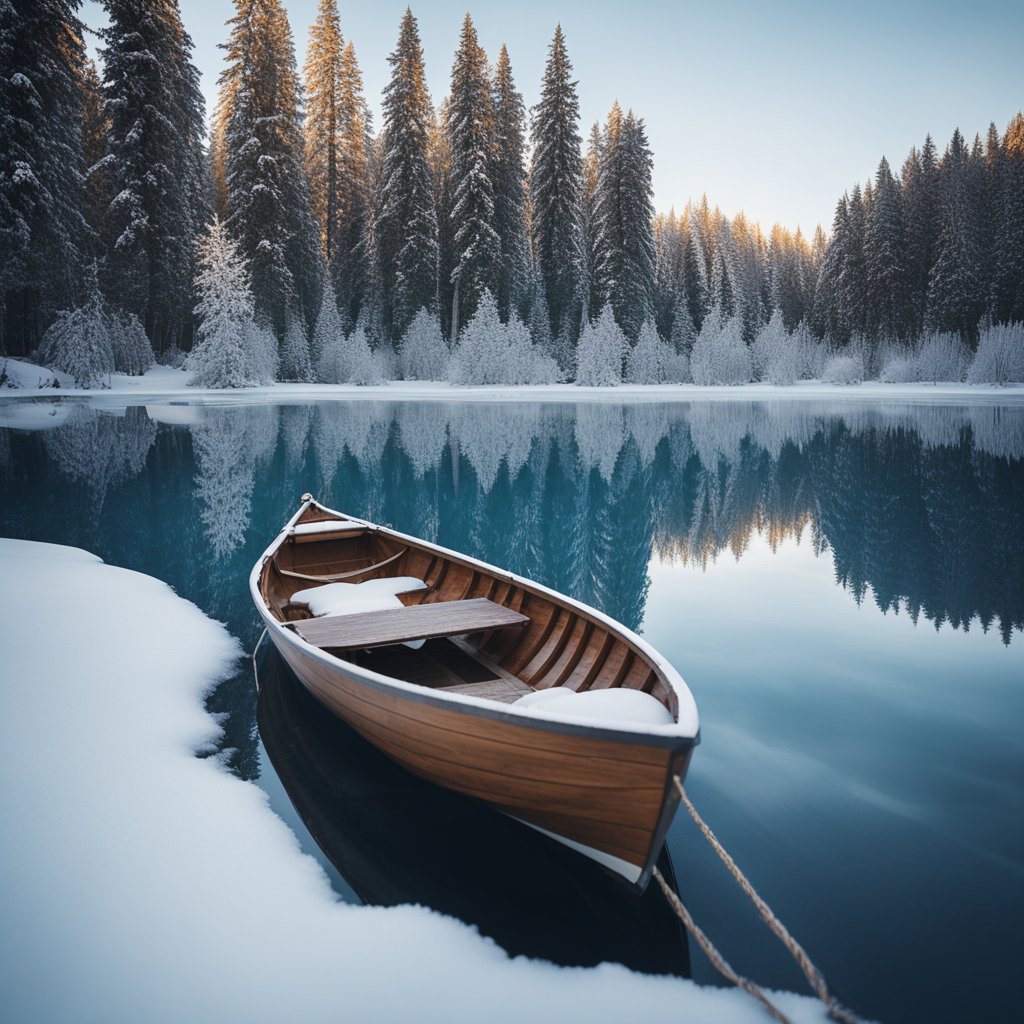
Have you considered the unique calm of boating on a lake in winter?
It's the off-season secret that you might just get hooked on.
Why Winter?
Think about it—no crowds, unspoiled scenery, and some of the best fishing spots become exclusively yours.
Doesn't that sound perfect?
When it comes to gear, it's all about staying warm and dry:
- Dress in Layers: Start with a base layer that wicks moisture away from your skin. Think synthetics or wool, but steer clear of cotton.
- Insulation is Key: Add a fleece or down layer for insulation.
- Protective Outerwear: Your final layer should be wind and water-resistant. A good quality jacket and pants are must-haves.
Safety Measures: Safety should never take a backseat.
- Life Jackets: These are non-negotiable, even for the most experienced swimmers.
- Check Your Vessel: Ensure that your boat is winter-ready, paying special attention to the batteries and engine.
- Tell Someone: Always let someone know your plans and expected return time.
Remember, with fewer people around, you'll need to be self-reliant.
But that's just part of the adventure, right?
Finally, the serene environment isn't the only draw.
Did you know winter is a prime time for fishing?
Certain species are more active, so why not try your hand at winter angling too?
Bundle up and embark on a winter boating journey—it’s an intimate experience with nature not to be missed.
Just imagine the beauty of a lake dusted with snow, all from the comfort of your boat.
Ready to set sail?
Changing Scenery
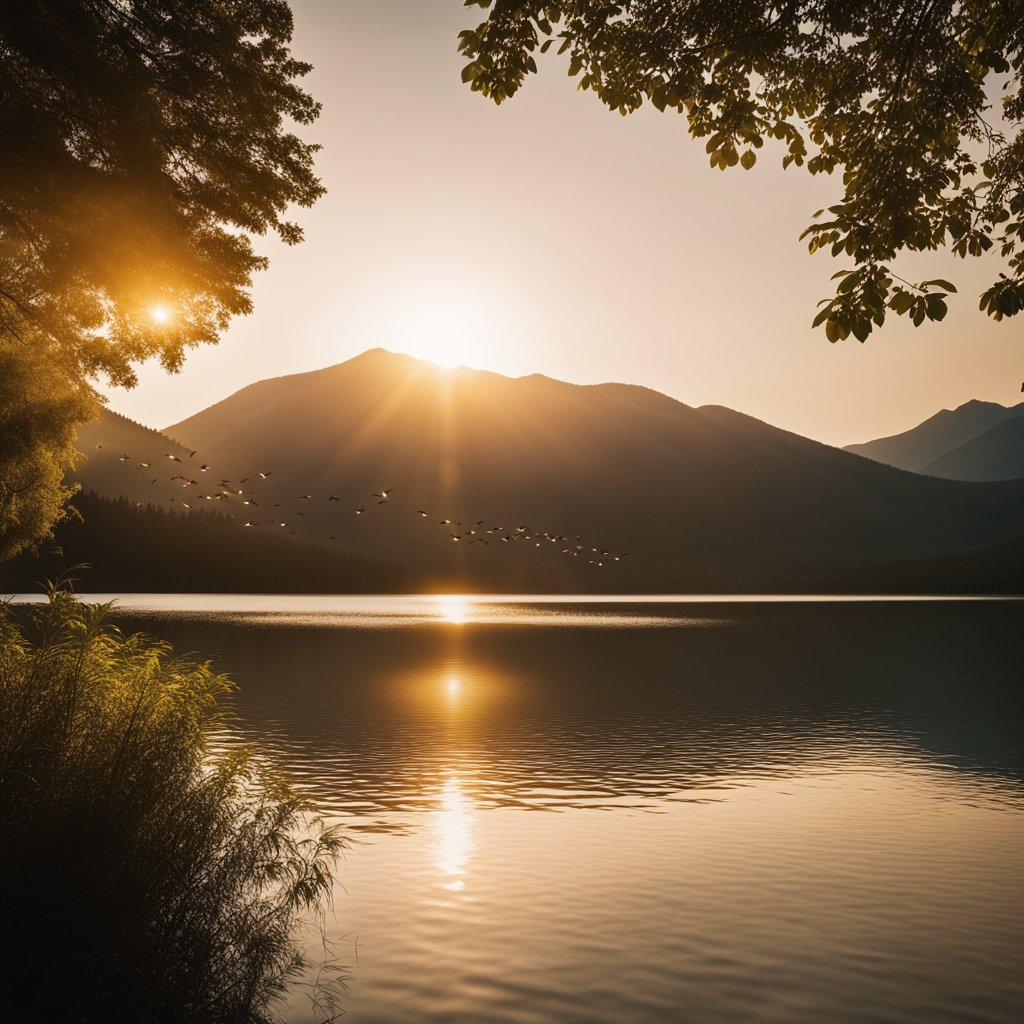
Ever wondered what it's like to see the world through a kaleidoscope?
That's your view from the deck of your boat as the seasons shift.
Imagine yourself wrapped in a crisp autumn breeze.
You marvel at the shoreline, a vibrant canvas of oranges, reds, and yellows.
It's nature’s fiery farewell to the warmer months.
Come spring, the scenery does a 180.
Those bare branches?
Now they're budding with fresh leaves.
Look around and you'll notice the landscape peppered with dashes of pink, white, and purple as flowers wake up after their winter slumber.
And it's not just the plants that are a buzz.
The air thrums with the return of wildlife.
Ducks gracefully glide across the lake, while in the background, squirrels are on turbo mode.
Fall:
Leaves turn into a splendid color show.
Spring:
Blooming flowers make a comeback.
Migratory birds and lake dwellers revitalize the ecosystem.
Your lake excursions are never static; they're a front-row ticket to the greatest show on Earth.
And the best part?
You're not stuck looking at a screen or through a window.
You're out there, in the thick of it all, living every color change and every splash.
So, what are you waiting for?
Get out there and let the scenic drama of the seasons unfold around you!
Seasonal Wildlife Patterns
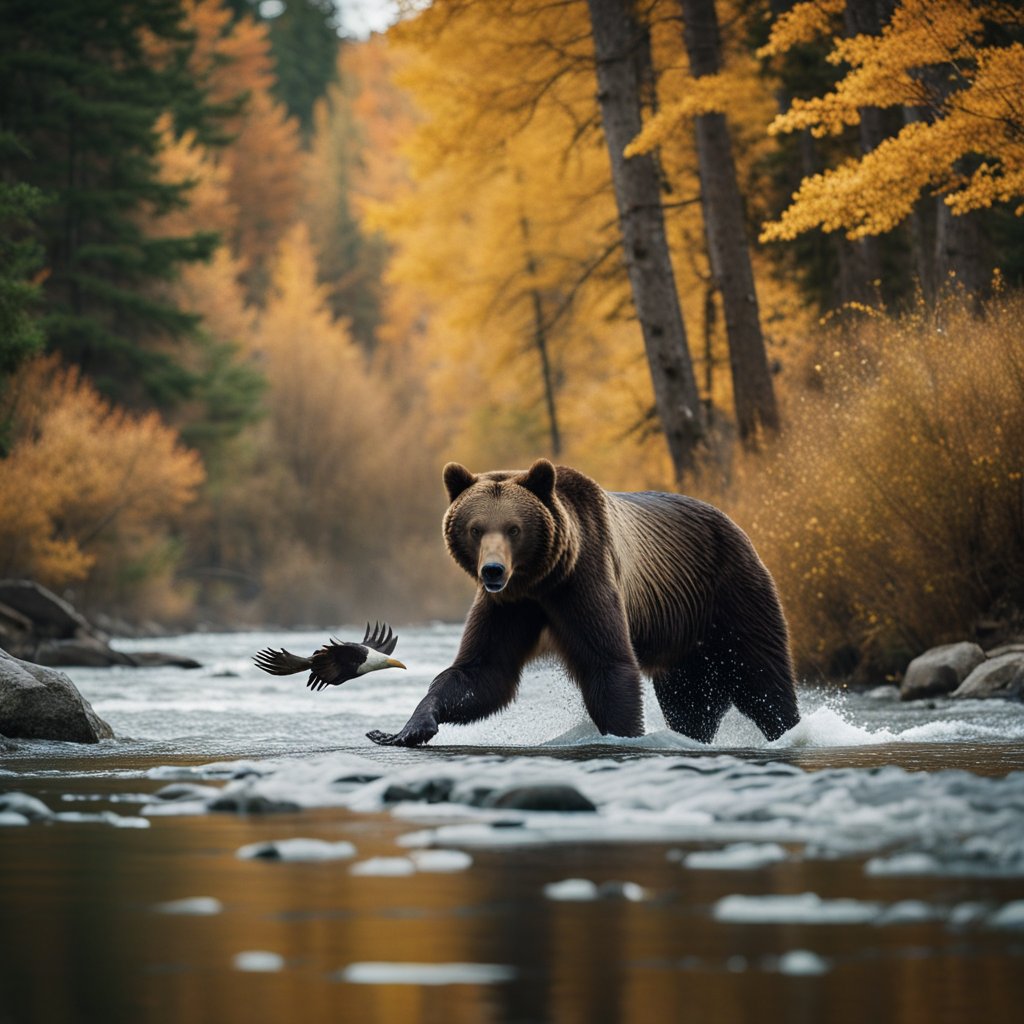
Ever wondered what makes lake boating so fascinating throughout different seasons?
It's not just the changing scenery; it's also the wildlife patterns that shift with the weather!
Spring
In the spring, you're in for a treat:
- Watch for bird migrations. The sky is a busy highway with species returning from their winter vacations.
- Ah, the fish! They're getting ready for spawning, which can be quite a spectacle in shallower waters.
Summer
Summer is all about abundance:
- Lakes are brimming with life. From dragonflies to the kingfishers, everyone's active.
- Fish like bass seek cooler waters, so look deeper, and you might catch a glimpse of their summer hideouts.
Fall
When leaves are painting the world in shades of gold and amber, the lake's residents prepare for cooler days:
- Migratory birds begin their southward journey. Take a moment to admire the V-formations overhead.
- For fishing enthusiasts, many fish species are fattening up for winter, making them easier to spot.
Winter
Yes, it's cold, but:
- Overwintering birds are still there. Bundle up, and don't miss the resilient wildlife that sticks around.
- While many fish hunker down, you could still see the hardy few under a clear patch of ice if you're lucky.
What's key?
Timing your boating trips with these natural phenomena can enrich your experience.
So next time you're planning a day on the lake, think about the creatures sharing the water with you—after all, you're just visiting their home!
Variable Lake Levels
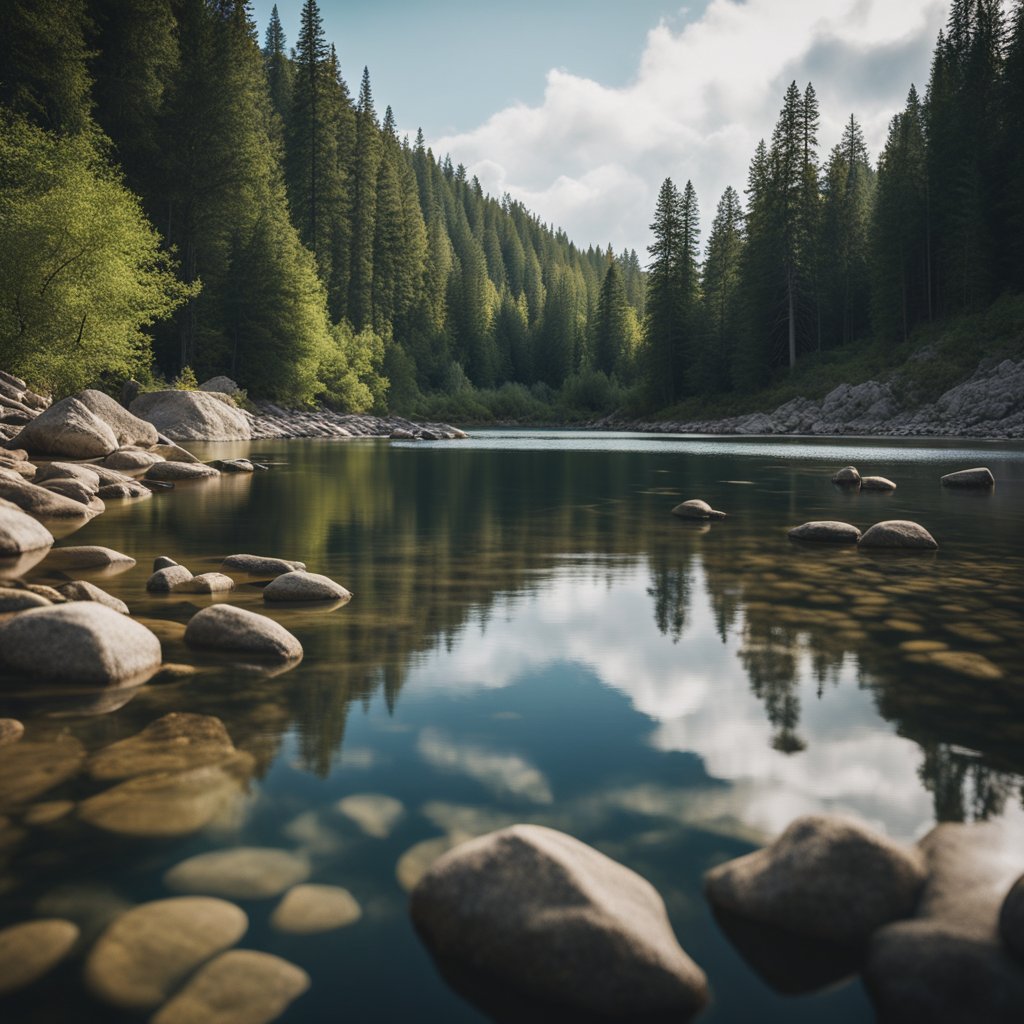
Hey, have you ever wondered why sometimes your favorite lake seems to be playing a game of hide and seek with the water levels?
Let's dive in and figure out why you might need to adjust your boating plans from season to season.
Seasonal shifts have a big say in lake water levels.
In the spring, you'll often witness the waters rising.
That's your cue; the lake is filling up its banks with the fresh melt from the winter's snow and the generous seasonal rains.
This can mean more space for you to zip across the waters in your boat.
But here's something to keep in mind—these levels can rise by an average of 12 to 18 inches from winter to early summer!
Surprising, right?
It's not just about how deep your anchor goes; it's about how these changes might limit where you can float your boat.
Some docks may be submerged and others might become accessible only when water levels are high.
During other seasons, especially the hotter ones, evaporation might shrink the lake's waistline, and if we're light on rainfall, you'll see even more of a dip.
This turning up and down of the water volume can make some areas tricky to navigate due to submerged hazards or reduced water depth.
Here’s a fun fact: Local management often steps in to help moderate these changes.
They juggle the needs of the boating community with coastal businesses and overall lake health—kind of like nature's own event planners keeping the party going smoothly.
Remember, whether you're heading out for a chill day on the lake or an epic water skiing adventure, it pays to keep an eye on those ever-changing lake levels.
They might just surprise you!
- Spring to Early Summer: 12-18 inch increase in levels
- Hot Seasons: Possible decrease due to evaporation and low rainfall
Stay informed and you'll always be ready for a great day on the water, no matter what Mother Nature has in store!
Seasonal Mooring
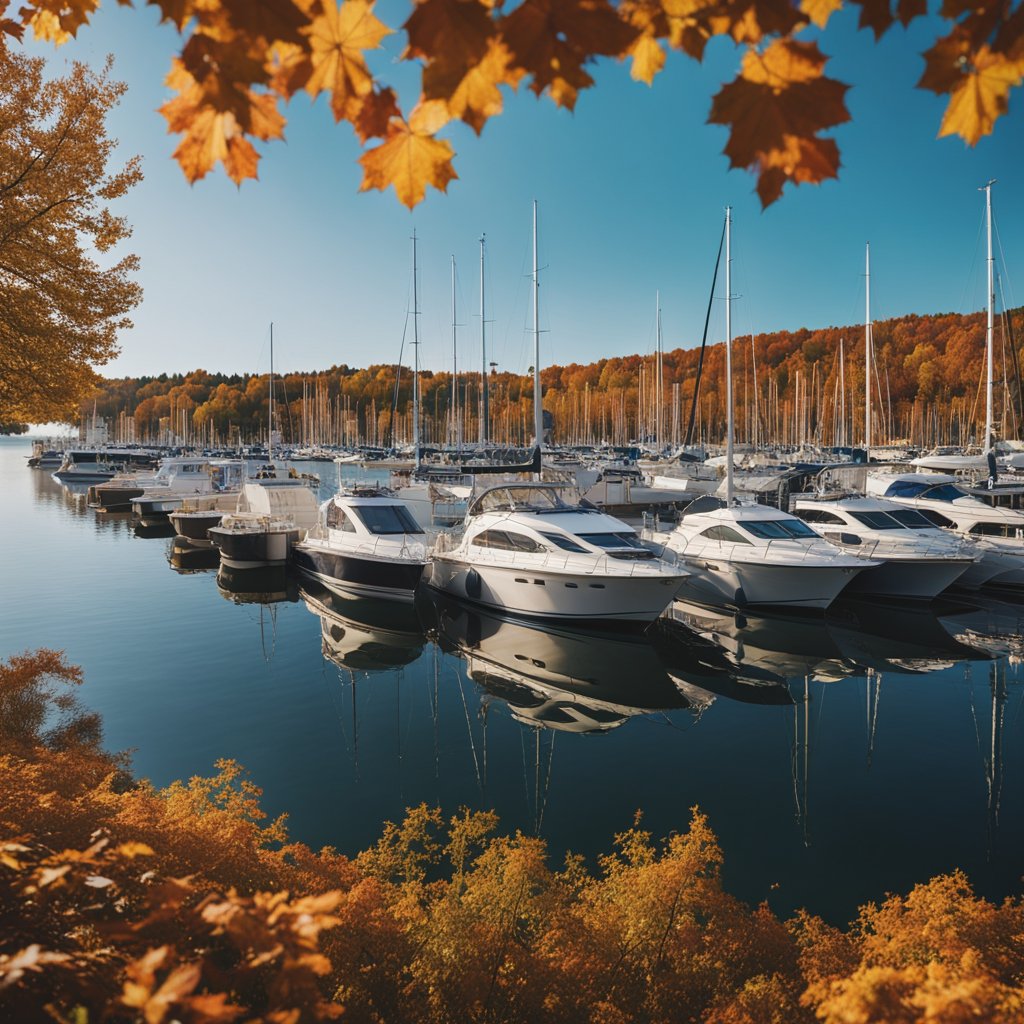
Hey there, boat enthusiast!
You're probably aware that boats need a snug spot to hang out when they're not cruising the waves, right?
Seasonal mooring is that cozy nook, but it's not just about tying up; it's about synchronizing with the seasons.
Let's uncover some nifty details about this boater’s ritual.
In places where winter means business, seasonal mooring is like a migratory pattern for boat docks and hardware.
Owners often install their mooring systems as spring breathes life back into the lakes and then tuck them away before winter's icy grip can cause any mischief.
This "Now you see me, now you don't" act keeps moorings safe from freeze-related damage.
Here's a quick breakdown of what goes down, and when:
Remove systems to protect.
So let's say you've got your snazzy boat and you're ready to pick a seasonal mooring spot—keep these tips in your skipper’s cap:
- Spring Cleaning: Start by sprucing up your boat after winter storage. Polish it until it shines like a diamond!
- Knot it Right: Master a few trusty knots for secure mooring—like the cleat hitch or bowline.
- Choose Wisely: Not all spots are created equal. Find a mooring that's secure and well-maintained.
Remember, your boat is your pride and joy.
Treat its mooring with the same love and you'll both enjoy smooth sailing season after season.
Happy boating, captain!
Summer Night Boating

Have you ever felt the cool summer breeze on your cheeks while cruising across a serene lake at night?
There's something magical about night boating in the summer — a sense of peace as the sun sets and the stars take the stage.
Before Setting Sail
- Safety Gear: Double-check your life jackets, lights, and communication devices.
- Boat Prep: Ensure your vessel is in tip-top shape, with functioning navigation lights.
- Crew Briefing: Make sure everyone knows their role and safety procedures.
Navigation at Night While the waters are quieter and the views breathtaking, navigating a lake at night requires extra precautions.
Here's a brief summary:
- Go Slow: Reduce your speed to avoid unexpected obstacles.
- Stay Vigilant: Constantly scan the water for other vessels, debris, or wildlife.
- Know the Lights: Familiarize yourself with the lighting configurations of other boats to identify them in the dark.
During the Voyage
- Enjoy the stars and keep an ear out for the sounds of nocturnal creatures.
- Keep an eye on the weather using your smartphone or a weather radio.
- If the temperature drops, keep warm clothing handy to avoid a chill.
Remember, the name of the game is safety, so always file a float plan with someone onshore — let them know where you're going and when you expect to return.
Night boating in the summer can offer you experiences and sights you won’t see during the day.
Just make sure you’re prepared, and you'll have nighttime tales to share for years to come.
Happy boating!


